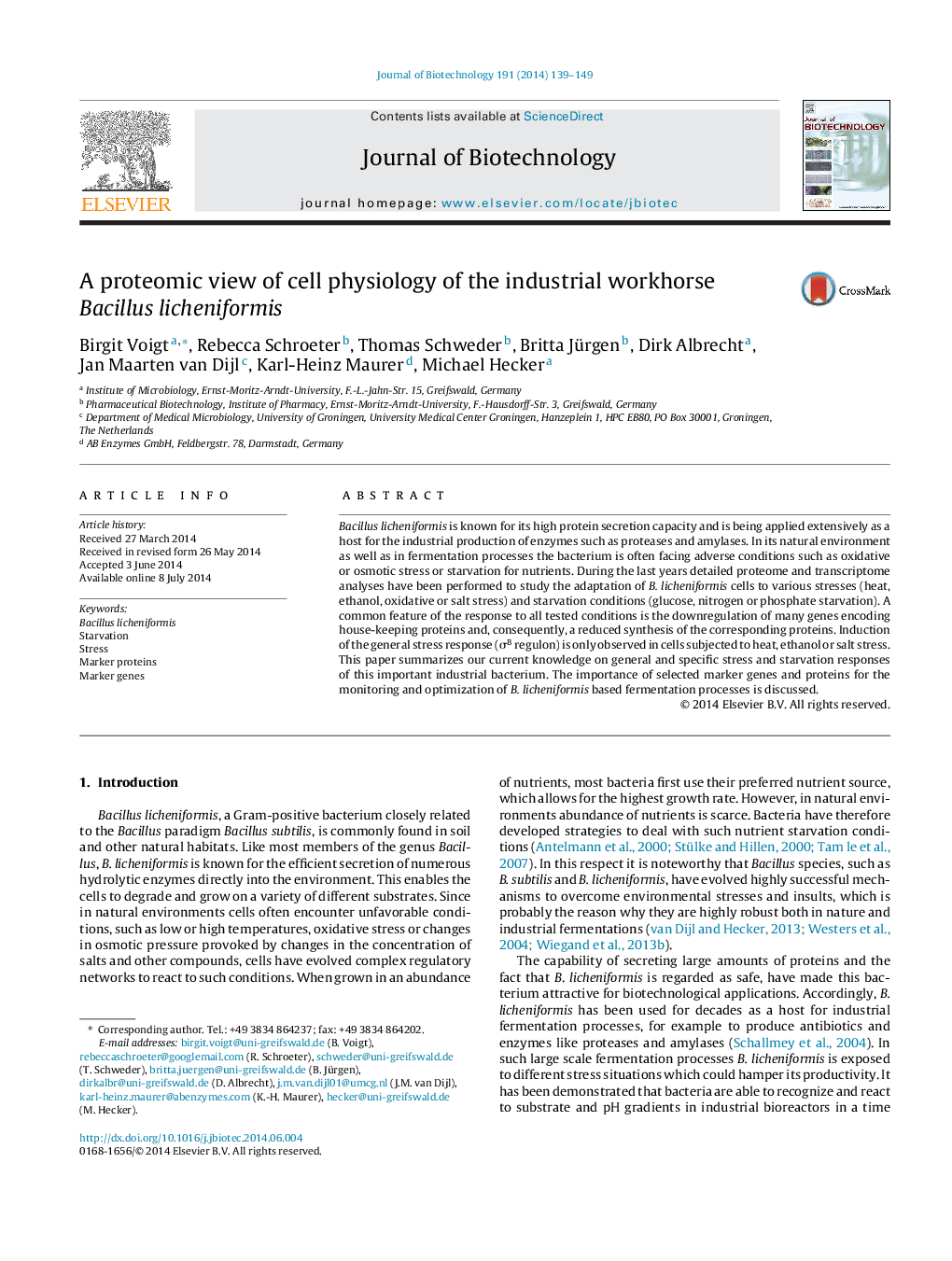| Article ID | Journal | Published Year | Pages | File Type |
|---|---|---|---|---|
| 23009 | Journal of Biotechnology | 2014 | 11 Pages |
•Responses of Bacillus licheniformis to nutrient starvation and stress are discussed.•Color-coded in silico fusion gels were generated.•We define general and specific marker proteins for stress and starvation.•The responses of Bacillus licheniformis to high-level protein secretion are discussed.
Bacillus licheniformis is known for its high protein secretion capacity and is being applied extensively as a host for the industrial production of enzymes such as proteases and amylases. In its natural environment as well as in fermentation processes the bacterium is often facing adverse conditions such as oxidative or osmotic stress or starvation for nutrients. During the last years detailed proteome and transcriptome analyses have been performed to study the adaptation of B. licheniformis cells to various stresses (heat, ethanol, oxidative or salt stress) and starvation conditions (glucose, nitrogen or phosphate starvation). A common feature of the response to all tested conditions is the downregulation of many genes encoding house-keeping proteins and, consequently, a reduced synthesis of the corresponding proteins. Induction of the general stress response (σB regulon) is only observed in cells subjected to heat, ethanol or salt stress. This paper summarizes our current knowledge on general and specific stress and starvation responses of this important industrial bacterium. The importance of selected marker genes and proteins for the monitoring and optimization of B. licheniformis based fermentation processes is discussed.
